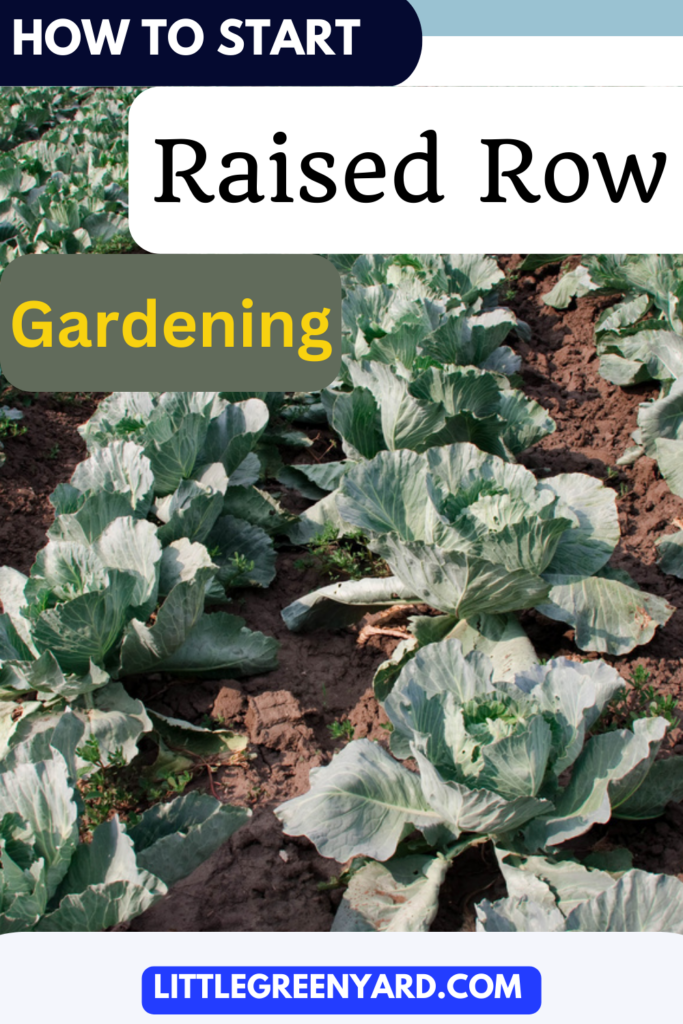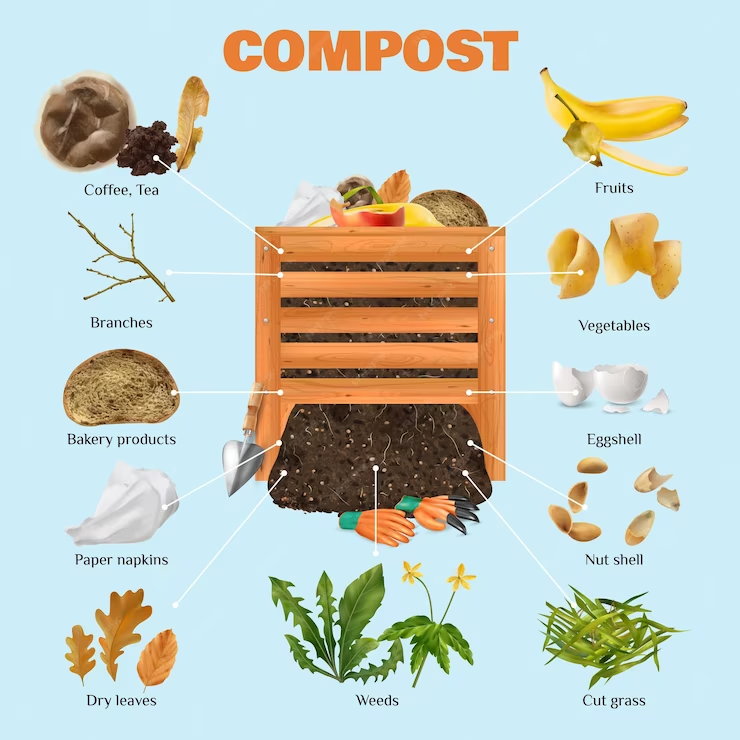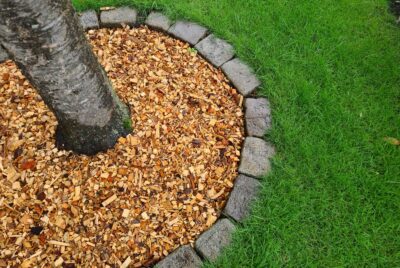How to Start Raised Row Gardening
Raised row gardening is a great way to grow your own food, even if you don’t have a lot of space. Raised beds are elevated above the ground, which makes them easier to work in and provides better drainage. They also heat up faster in the spring, which means you can start planting earlier.
In this article, I will walk you through the steps of starting a raised row garden. I will cover everything from choosing a location to planting your seeds. I will also provide some helpful tips and suggestions along the way.
Choosing a Location
The first step is to choose a location for your raised bed. It should be in a spot that gets full sun for at least six hours a day. It should also be in a well-drained area. If your soil is poor, you may want to amend it with compost or other organic matter.
It is absolutely vital not to ignore your yard’s topography and sun exposure because certain vegetables require different light hours for optimal growth! Your yard location will have an effect on crop selection and its yield.
Building the Beds
Once you have chosen a location, you can start building your beds. The size of your beds will depend on how much space you have and how much food you want to grow. A good rule of thumb is to make your beds 4 feet wide and 6 feet long.
There are a few different ways to build raised beds. You can use wood, bricks, or concrete blocks. If you are using wood, make sure to use pressure-treated lumber. This will help to prevent the wood from rotting.
Once you have built your beds, you need to fill them with soil. You can use topsoil or a mixture of topsoil and compost. Be sure to add some organic matter to the soil to help improve drainage and fertility.
Raised Row Gardening Hack #1
Wooden pallets are a great way to save money on materials when building a raised bed. However, it is important to note that not all pallets are created equal. Some pallets have been treated with chemicals that can be harmful to plants. It is important to inspect the pallets carefully before using them.
Here are some tips for reusing wooden pallets:
- Inspect the pallets carefully for any signs of damage or rot.
- Remove any nails or screws that may be sticking out.
- Sand the pallets smooth to remove any splinters.
- If the pallets have been treated with chemicals, you may want to paint them with a natural finish.
Once you have prepared the pallets, you can use them to build your raised bed. Here are some instructions:
- Lay the pallets out in the shape of your desired bed.
- Secure the pallets together using nails or screws.
- Fill the bed with soil and plant your plants.
Reusing wooden pallets is a great way to save money and reduce waste. With a little care and preparation, you can easily build a beautiful and functional raised bed using recycled materials.
Here are some additional benefits of using wooden pallets for raised beds:
- Pallets are a durable material that can withstand the elements.
- Pallets are a versatile material that can be used to create a variety of different raised bed designs.
- Pallets are a sustainable material that can help to reduce waste.
If you are looking for a way to save money, reduce waste, and create a beautiful and functional raised bed, then using wooden pallets is a great option.
Planting Your Seeds
Once your beds are filled with soil, you can start planting your seeds. Be sure to follow the instructions on the seed packet for planting depth and spacing.
Water your seeds regularly, especially during the first few weeks after planting. You may also want to apply a layer of mulch around your plants to help keep the moisture in and the weeds out.
Raised Row Gardening Hack #2
Here are some examples of seeds that are suitable for raised row gardening:
- Carrots: Carrots are a popular choice for raised row gardening because they grow well in loose, well-drained soil.
- Tomatoes: Tomatoes are another popular choice for raised row gardening because they require full sun and well-drained soil.
- Lettuce: Lettuce is a cool-season crop that can be grown in raised beds in the spring and fall.
- Beans: Beans are a warm-season crop that can be grown in raised beds in the summer.
- Peas: Peas are another warm-season crop that can be grown in raised beds in the summer.
When choosing seeds for your raised row garden, it is important to do your research and choose plants that are suited to your specific needs. Here are some additional tips for choosing seeds for raised row gardening:
- Read the seed packet carefully: The seed packet will tell you the amount of sunlight, water, and fertilizer that the plant requires.
- Start with small amounts of seeds: It is better to start with a small amount of seeds and then add more if needed. This will help to prevent overcrowding.
- Thin the seedlings: Once the seedlings have sprouted, you will need to thin them out. This means removing some of the seedlings so that the remaining seedlings have enough room to grow.
Caring for Your Garden
With a little care and attention, you can easily grow a beautiful and bountiful garden in your raised beds. Once your plants are established, you will need to water them regularly, especially during hot, dry weather. You may also need to fertilize them every few weeks.
Be sure to keep an eye out for pests and diseases. If you see any problems, take action immediately to prevent them from spreading. Here are some of the most common pests and diseases that can affect raised row gardens:
Pests
- Aphids: Aphids are small, soft-bodied insects that feed on plant sap. They can cause leaves to wilt and curl, and they can also transmit diseases.
- Slugs and snails: Slugs and snails are mollusks that feed on plant leaves and stems. They can be difficult to control, but there are a variety of methods that can be used, such as baits, traps, and copper tape.
- Spider mites: Spider mites are tiny, eight-legged creatures that feed on plant juices. They can cause leaves to turn yellow and dry up.
- Whiteflies: Whiteflies are small, white insects that feed on plant sap. They can cause leaves to turn yellow and wilt, and they can also transmit diseases.
Diseases
- Powdery mildew: Powdery mildew is a fungus that causes a white, powdery coating to form on leaves. It can be difficult to control, but there are a variety of methods that can be used, such as fungicides and selecting resistant varieties
- Downy mildew: Downy mildew is a fungus that causes a gray, fuzzy growth on leaves. It can be difficult to control, but there are a variety of methods that can be used, such as fungicides.
- Botrytis: Botrytis is a fungus that causes a gray, moldy growth on flowers, fruits, and leaves. It can be difficult to control, but there are a variety of methods that can be used, such as fungicides, and picking off affected leaves and flowers.
- Bacterial wilt: Bacterial wilt is a bacterial disease that causes leaves to wilt and die. It is difficult to control, but there are a variety of methods that can be used, such as removing and destroying infected plants, rotating crops, and using resistant varieties.
Raised Row Gardening Hack #3: How to spot pests and diseases
The best way to spot pests and diseases is to inspect your plants regularly. Look for any signs of damage, such as wilted leaves, holes in leaves, or strange growths. If you see anything that looks suspicious, take a closer look. If you are still not sure what you are looking at, consult a gardening book or website, or contact your local nursery or garden center.
Once you have identified a pest or disease, you can take steps to control it. The best method of control will vary depending on the specific pest or disease. However, some general tips include:
- Remove infected plants: If a plant is severely infected, it is best to remove it from the garden and destroy it. This will help to prevent the spread of the disease to other plants.
- Practice good sanitation: This means keeping your garden tools clean and free of dirt and debris. It also means removing any dead or dying plant material from the garden.
- Use resistant varieties: If there are resistant varieties of plants available, consider planting them. This will help to reduce your risk of problems from pests and diseases.
- Apply pesticides or fungicides: If necessary, you can apply pesticides or fungicides to control pests and diseases. However, it is important to use these products carefully and only when necessary. Wherever possible, choose organic pesticides and fungicides to minimize harmful effects to the environment and to human health.
By following these tips, you can help to keep your raised row garden healthy and pest-free.
Harvesting Your Crops
When your plants are ready to harvest, simply cut them off at the base. Be sure to harvest them before they go to seed. Enjoy your fresh, homegrown produce!
Final Words
Raising row gardening is a great way to grow your own food. It is a relatively easy and inexpensive way to get started. With a little planning and effort, you can have a successful raised row garden in no time.
FAQs
What are the benefits of raised row gardening?
There are many benefits to raised row gardening. Raised beds are easier to work in than traditional gardens, as they are not as prone to erosion and weeds. They also provide better drainage, which is important for plants that do not like wet feet. Raised beds also heat up faster in the spring, which means you can start planting earlier.
What are the drawbacks of raised row gardening?
The main drawback of raised row gardening is the cost. Raised beds require more materials than traditional gardens. However, the cost of raised beds is offset by the benefits they provide.
What are some tips for successful raised row gardening?
Here are some tips for successful raised row gardening:
- Choose a sunny location with well-drained soil.
- Build your beds at least 4 feet wide and 6 feet long.
- Fill your beds with a mixture of topsoil and compost.
- Water your plants regularly, especially during hot, dry weather.
- Fertilize your plants every few weeks.
- Keep an eye out for pests and diseases.
- Harvest your crops when they are ready.






